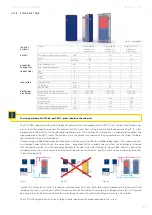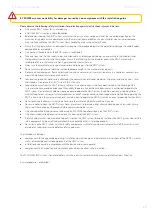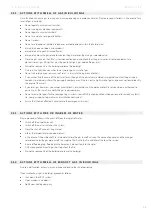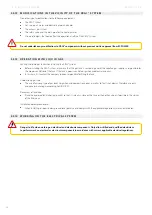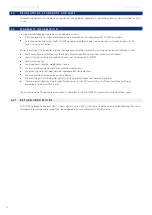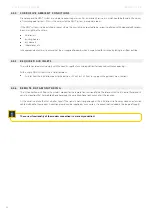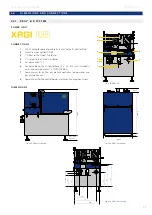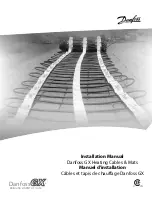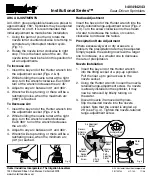
XRGI
®
- INSTALLATION GUIDE
VERSION 1.0 2018
27
Do not modify any system components on the XRGI® system without obtaining written approval from EC POWER in advance.
■
Never install an additional cover or enclosure around the unit.
■
Be sure to comply with the minimum clearances/assembly clearances required (
→
Chapter 4.5).
Deposits and encrustation, as well as scale formation and corrosion, can often lead to problems. It is essential to prevent corrosion as
well as deposits. Variables such as oxygen and carbon dioxide content, pH value and the conductivity (salt content) play a crucial role
in terms of the incidence of corrosion in heating circuits. Use EC POWER Engine Coolant, supplied with every new XRGI® system, to fill
and top up the engine circuit to avoid expensive repairs from corrosion in the pipes of XRGI® systems. Only use the heated EC POWER
Engine Coolant for heating purposes in the closed circuit and do not drain it off for other purposes.
The engine circulation water is filled and topped up from the expansion vessel on the Q-Heat Distributor.
Improper use of and/or unsuitable tools can cause damage (e.g., gas or water leaks).
To tighten or loosen screw connections, always use suitable open-end wrenches (spanner), but not pipe wrenches, extensions, etc.
S O U R C E S O F H A LO G E N C O M P O U N D S
3.3.9 M O D I F I C AT I O N S T O T H E X R G I ® S Y S T E M C O M P O U N D S
3.3.10 F I L L I N G A N D T O P - U P L I Q U I D
3.3.11 PROPERT Y DAMAGE CAUSED BY IMPROPER USE OF AND/OR UNSUITABLE TOOLS
We do not recommend adding chemicals to stabilise the hardness of the water, since limescale could develop into
sludge.
The solvents used for cleaning and contained in adhesives and paints are crucial. Chemical cleaning and degreasing baths are
sources of halogen compounds, as are flooring adhesives and other adhesives. Construction varnishes, paints and adhesives have
been produced for many years without halogenated hydrocarbons. Air-borne halogen compounds are often released when thinners
containing chlorinated hydrocarbons or adhesive removers containing chlorinated hydrocarbons are used, as well as new coats of
paint in heating plant rooms. Bleach alkalis and hydrochloric acid, often used for disinfection and for cleaning, can also be the cause
of corrosion. Spray paints or adhesives containing CFCs are rarely used today by professional tradesmen. If the source of halogenated
hydrocarbons cannot be completely eliminated (e.g., hairdressing salons, swimming pools, dry cleaning premises etc.), then the
supply of combustion air has to be solely supplied from an uncontaminated area.
Industrial sources
Chemical cleaners
Trichloroethylene, tetrachloroethylene, hydrofluorocarbons
Degreasing baths
Perchloroethylene, trichloroethylene, methylene chloride
Printing houses
Trichloroethylene
Cooling equipment
Methyl chloride, trichlorofluoromethane, dichlorodifluoromethane
Domestic sources
Cleaners and degreasing agents
Perchloroethylene, methyl chloroform, trichloroethylene, methylene chloride,
carbon tetrachloride, hydrochloric acid
DIY sources
Solvents and thinners
Chlorinated hydrocarbons
Spray cans
Hydrofluorocarbons (Frigen)
This list is not an exhaustive list.
Содержание XRGI 15
Страница 1: ...I N S T A L L A T I O N G U I D E 01DOC1043 VERSION 1 0 2018 FOR PROFESSIONALS ...
Страница 31: ...XRGI INSTALLATION GUIDE VERSION 1 0 2018 31 ...
Страница 61: ......
Страница 62: ...I N S T A L L A T I O N G U I D E FOR PROFESSIONALS ...







